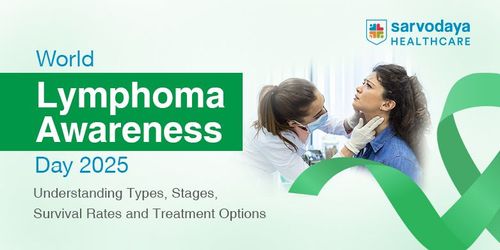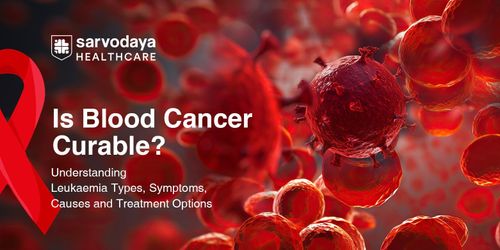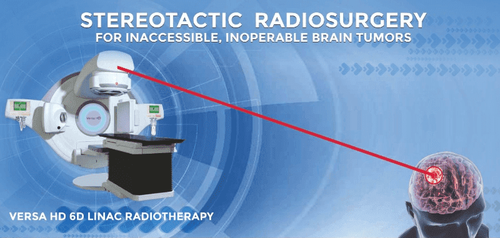Radiation oncology is a medical speciality that uses radiation therapy to treat cancer. Radiation oncology is one of the three primary specialities, the other two being surgical and medical oncology, involved in the treatment of cancer. Radiation therapy can be given as a curative modality, either alone or in combination with surgery and/or chemotherapy. It may also be used as palliative treatment, to relieve symptoms in patients with incurable cancers. Radiation therapy is performed in two different ways. One is through using a machine that produces a radiation beam to focus on the target area. The other type is called Brachytherapy where a radioactive substance is placed inside the body which emits radioactive energy to kill the cancer cells in the target area.
What Is Radiation Therapy?
Radiation therapy is a process, which uses ionizing radiation (High-energy X-Rays/Electron) to treat cancers, tumours and other conditions. The radiation breaks up the DNA of cancerous cells in such a way that it disrupts their growth and further division. This way radiation kills the cancer cells which either prevent or slow down the condition. Radiation therapy is usually recommended in combination with other treatment methods such as chemotherapy, surgery, or both.
Types of Radiation Therapy
Radiation therapy is given in two forms depending on the type of cancer, its size and location in the body.
1: External beam radiation therapy
External therapy is the most used one, where an external machine emits a focused beam of high-energy ionizing radiation on the tumour from a distance. The External beam machine is large. It does not touch the patient, but moves around the patient and deliver a high dose of radiation to the tumour from different directions. External beam radiation therapy is a local treatment, so it only treats a specific part of the body. For example, for Ca lung, external beam radiation only treat the lung and chest area, not to the whole body. Different forms of radiation can be used through this machine depending on the treatment recommended. For example, high-energy X-ray beams are used to target deeply rooted cancers.
2: Internal radiation therapy/Brachytherapy
Internal radiation therapy is a treatment in which a radioactive source is implanted inside the body, in or close to the cancer-affected tissues. Brachytherapy is also a local treatment and treats only a specific part of the body. The implant emits radiation, which helps to kill the cancer cells. The implant can be temporary or permanent. This is done to limit the extent of radiation exposure to the healthy tissue surrounding the cancer cells. Brachytherapy usually recommends for treating cancers of head and neck, breast, cervix and prostate.
Radiation oncology specialists may recommend both types of radiation oncology treatment depending on the type, size, location of the tumour in consideration with the person’s age & overall health.
Uses Of Radiation Therapy
For some cancers, radiation therapy may be the only treatment. However, most often, radiation therapy is given with a combination of other cancer treatment, such as surgery, chemotherapy, and immunotherapy. Radiation therapy may be given before, during, or after these other treatments to improve the chances that treatment will work. The timing of when radiation therapy is given depends on the type of cancer being treated and whether the goal of radiation therapy is to treat cancer or ease symptoms.
When radiation is combined with surgery, it can be given:
- Before surgery, to shrink the size of the tumour, so it can be removed by surgery and be less likely to return.
- During surgery, so that it goes straight to the tumour without passing through the skin. Radiation therapy used this way is called intraoperative radiation. With this technique, the oncologist can more easily protect nearby normal tissues from radiation.
- After surgery to kill any cancer cells that, remain.
Side Effects Of Radiation Therapy
While treating cancer cells, radiation beams can affect healthy cells too which causes side effects, although these depend on several factors such as the area receiving treatment, a person’s overall health condition, other cancer treatments, genetics, and other factors, such as smoking. Healthy cells that are damaged during radiation treatment usually recover within a few months after treatment is over. Side effects can be short-term & long-term.
Short term side effects
- Fatigue, nausea & vomiting
- Hair loss or changes in skin
- Diarrhea
Long term side effects
- Heart or lung problems
- Thyroid problems and hormonal changes
- Possibility of early menopause
There are very slight chances of high radiation doses increase the risk of developing another form of cancer. Not everyone experiences long term side-effects. The side effects can usually be treated and controlled with advance treatment techniques like IMRT, IGRT, respiratory gating, SBRT and SRS/SRT. Side effects caused due to radiation therapy are not permanent.
At Sarvodaya Cancer Institute, our radiation oncologist work towards finding the best treatment modalities for the patients, after a detailed diagnosis with the latest technology.




























































